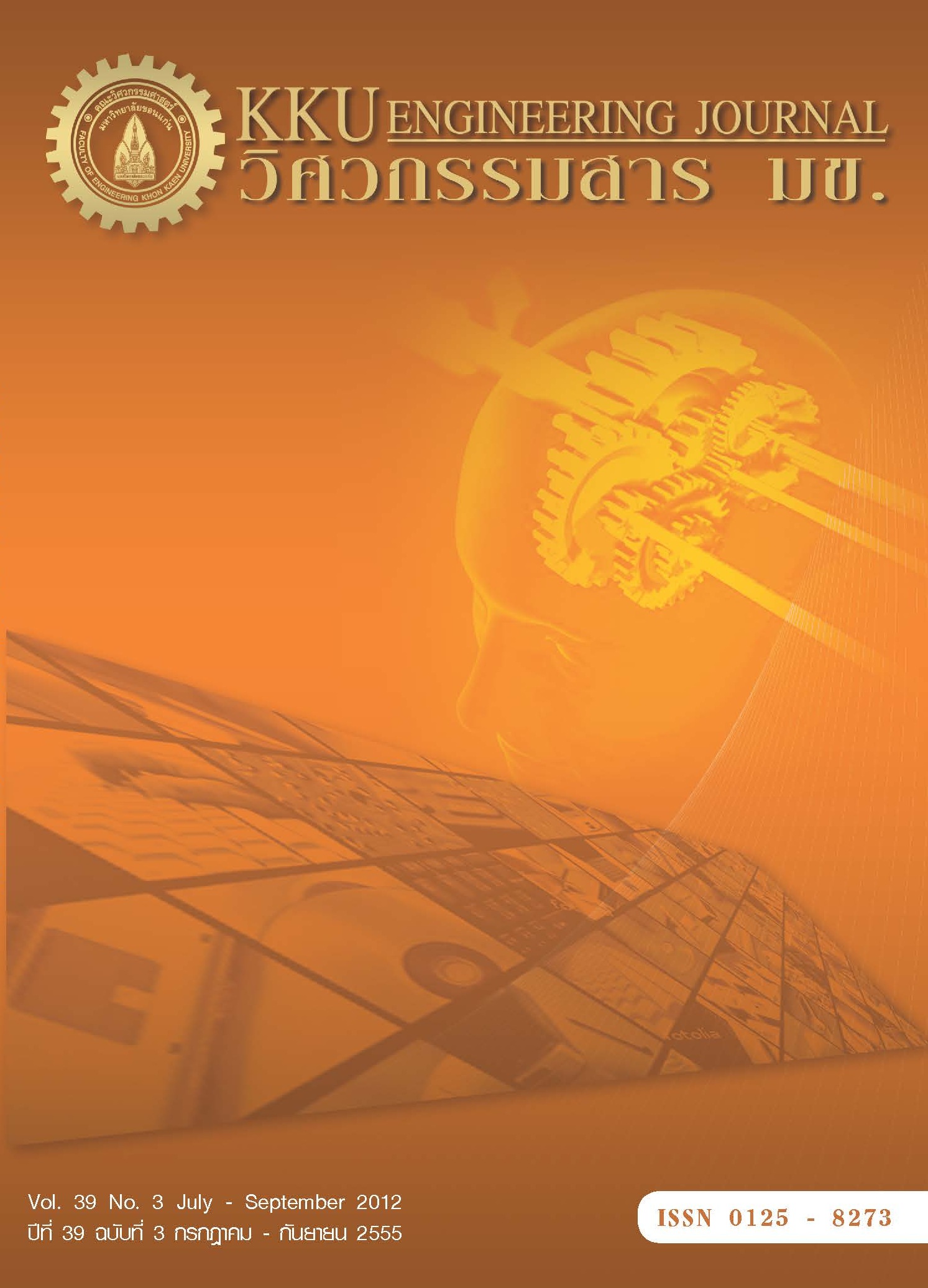Electrical resistivity of poly (vinyl alcohol) nanofibrous structures filled with carbon black, self-dispersible carbon black and carbon nanotube
Main Article Content
Abstract
The studies of electrical resistivity of poly (vinyl alcohol) nanofibrous structures filled with carbon black,self-dispersible carbon black and carbon nanotube were done in this work. The PVA solution was prepared at25% and the filler loading was varied to 2% 4% 6% 8% and 10% of PVA amount. The nanofibrous structures werefabricated by electrospinning method. The results revealed that carbon black was able to reduce electrical resistivity of electrospun structures. However, the agglomeration of carbon black particles occurred and thisresulted in fluctuation of the amount of carbon black in the nanofibrous structures and their electrical resistivity aswell as sensitivity. The surface treatment of carbon black particles yield self-dispersible carbon black whichcould increase degree of dispersion in PVA solution, leading to less fluctuation of the amount of carbon black inthe fibers and their resistivity and sensitivity. Considering carbon nanotubes, it was observed that large clusterswere formed and particulate settling occurred in the polymer solution. The agglomeration of fillers and particulatesettling in solution seems to be a controlling factor in the variation of solution electrical property, filler amount innanofibrous structures, and electrical property of the nanofibrous structures.
Keywords : Nanofiber, Poly (vinyl alcohol), Carbon black, Self-dispersible carbon black and carbon nanotube
Article Details
This work is licensed under a Creative Commons Attribution-NonCommercial-NoDerivatives 4.0 International License.



